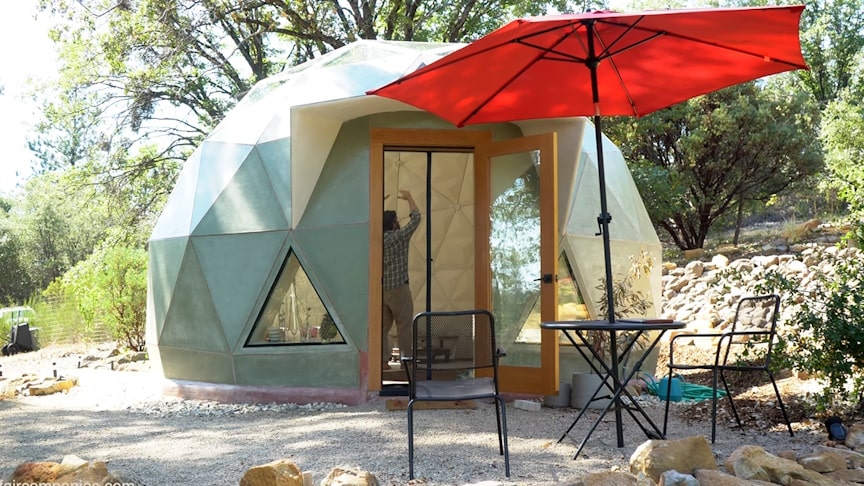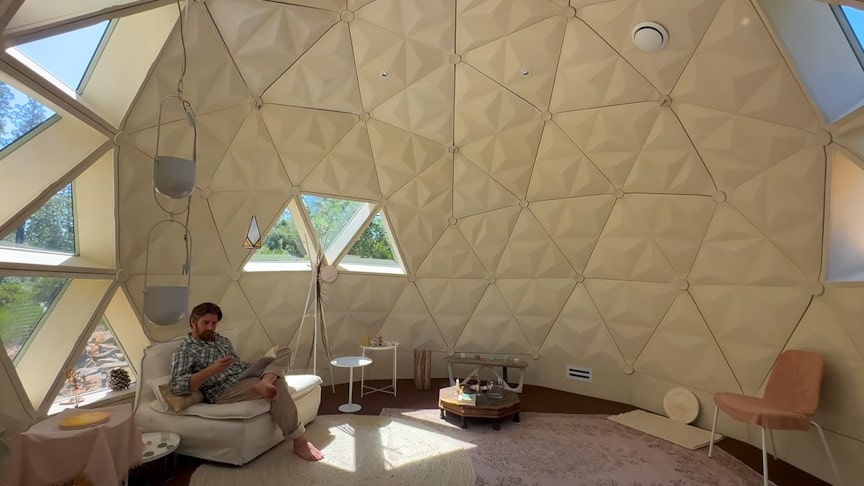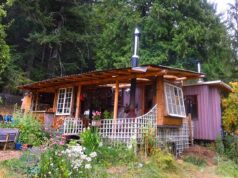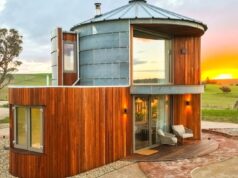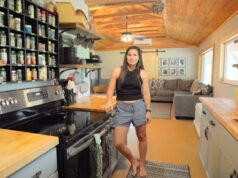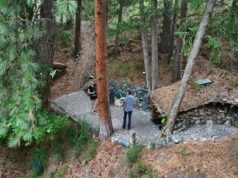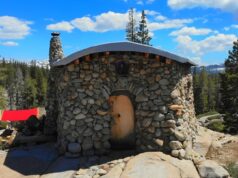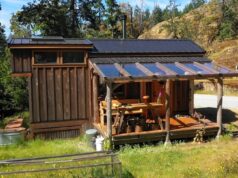On a rural property on the slopes of California’s Sierra Nevada mountains, Morgan Bierschenk and his team have been refining a durable, mineral-like material to build sturdy dome homes with a particular matte-ceramic finish. They have called their modular dome homes Geoships.
source.image: Kirsten Dirksen
Geoships are made of “bioceramic.” Used up until recently on high-end consumer electronic products, bioceramic is an organic material that, once bonded, can withstand disasters and last 500 years unscathed —and perhaps lower construction costs at a mass scale. Their goal is to build big family domes and enduring communities, Bierschenk says.
source.image: Kirsten Dirksen
To prove their point, Morgan Bierschenk and his team plan an ecovillage in which Geoships of different sizes, purposes, and finishes are clustered around walkable paths amid pristine land and access to gardening and proximity services.
Advertisement
Geoships’ bioceramic structure is lightweight and sturdy, ideal for self-reinforcing geodesic domes using Bucky Fuller’s geometric principles, and adds a few advantages: the material is fireproof up to 2,700 degrees Fahrenheit (1500 degrees Celsius), and it won’t burn.
The material’s strength and the homes’ shape would allow Geoships to endure hurricanes and other extreme weather events, resisting also insects and mold. In the event of floods, bioceramic absorbs little water due to the dome shape and the way panels chemically bond together. The startup estimates that their domes built today will last 500 years; the homes can also be disassembled and rebuilt elsewhere if needed, guaranteeing a climate-proof resilience that could be advantageous in the coming decades.

